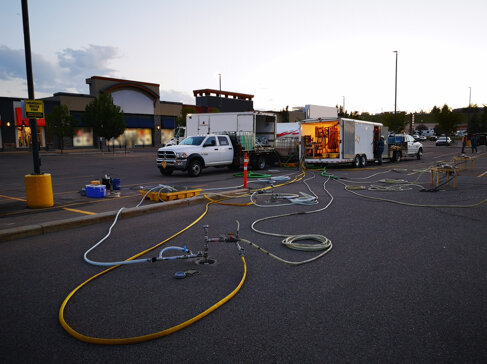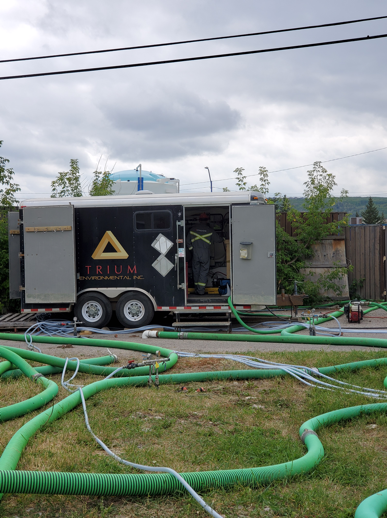In-Situ Chemical Oxidation

In-Situ Chemical Oxidation
Former Wellsite Sump
Location: Barrhead, Alberta
When: 2020
Contaminant of Concern: BTEX, F1, F2
Impacted Media and Volume: 645 m3 impacted soil and 3,000 m3 impacted groundwater
Tasks: Remediation Program Design, Blending, and Field applications
The Problem
Former admixed drilling sump at an abandoned wellsite. Surficial soil impacts were excavated and removed from Site. Shallow groundwater limited excavation and required in-situ treatment method for remaining soil impacts and groundwater impacts. Lithology of the target treatment zone is saturated silty sand, creating a pathway for contaminant migration.
The Approach
In-situ chemical oxidation (ISCO) program based on treatment of soils using drive points on a 0.75 meter injection radius of influence to increase contact certainty between the oxidant and contaminants due to unsaturated soils. Groundwater injections were completed using 13 injection wells targeting the saturated intervals. Injections were completed in the fall and winter so as to have a frost cap in winter.
The soil treatment program was conducted over 5 days with the advancement of 40 injection points and 28,000 litres of blended 10-15% MFR (modified fentons reagent) oxidant injected. The groundwater treatment program was conducted over 2 events for a total of 20 days and injection in 13 injection points and 60,000 litres of blended 10-15% MFR (modified fentons reagent) oxidant injected. Blending is site specific following TRIUM’s TriOx process.
The Results
Confirmatory soil and groundwater samples following injections met applicable guidelines
Very short timeframe of treatment events
Combinations of soil and groundwater treatment simultaneously resulted in >90% contaminant reduction












